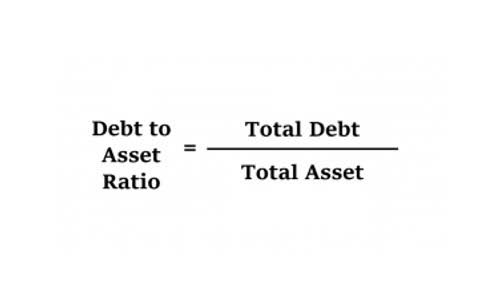Как заказать VIP-девушку по вызову с выездом для эксклюзивных встреч
January 8, 2025Как заказать девушку по вызову для вечеринки в Москве: особенности и рекомендации
January 29, 2025
This figure reflects the company’s ability to maintain some of its earnings for future growth. The net income helps show what amount the company sets aside for dividend payments, plus any monies for any losses that might have occurred. The example balance sheets for Edelweiss revealed how retained earnings increased and decreased in response to events that impacted income.

What is the Retained Earnings Statement for?
Retained earnings refer to the historical profits earned by a company, minus any dividends it paid in the past. To get a better understanding of what retained earnings can tell you, the following options broadly cover all possible uses that a company can make of its surplus money. For instance, the first option leads to the earnings money going out of the books and accounts of the business forever because dividend payments are irreversible. Retained earnings are business profits that can be used for investing or paying down business debts. They are cumulative earnings that represent what is leftover after you have paid expenses and dividends to your business’s shareholders or owners.
Importance of Retained Earnings for Business Growth
- Retained earnings are related to net (as opposed to gross) income because they reflect the net income the company has saved over time.
- Shareholders are not forgotten, as dividends amounting to $3,000 are paid out.
- Retained Earnings balance for the first accounting period will be equal to Net Profit (Not Loss) for that accounting period after deducting of dividends paid out if any.
- She is a QuickBooks Online ProAdvisor, LivePlan Expert Advisor, FreshBooks Certified Partner and a Mastery Level Certified Profit First Professional.
- Retained earnings are used for reinvestment in the business or paying off debts.
- This is a percentage view of the portion of your net income that you retain instead of paying out to shareholders.
- This payout is at the discretion of the company’s management and board of directors.
A business’s ability to reinvest its earnings is often a sign of its financial well-being. The statement of retained earnings provides a transparent view of how profits are managed, making it a valuable resource for stakeholders. Investors use this information to gauge whether a company prioritizes growth or dividend payments. If a company retains retained earnings statement most of its earnings, it may indicate plans for expansion, acquisitions, or significant internal investments.
- Even after calculating net income, a chunk of revenue goes out to shareholders.
- Retained earnings are typically used for reinvesting in the company, funding growth opportunities, repaying debt, purchasing assets, or building a reserve against future losses.
- Using the RORE offers a fun exercise to run when analyzing your company, and it is an item that I have added to my checklist.
- It’s essential to fine-tune these numbers as they send a strong message about the company’s financial stewardship and future prospects.
- By understanding and effectively managing retained earnings, businesses can reinvest in growth opportunities, pay down debt, and improve overall financial stability.
Step 1: Determine the financial period over which to calculate the change
But with money constantly coming in and going out, it can be difficult to monitor how much is leftover. Use a retained earnings formula to track how much your business has accumulated. At Cledara, we prioritize growth by investing in innovation and acquiring new customers to drive revenue. As a high-growth company backed by institutional investors, our focus remains on scaling rather than generating positive retained earnings at this stage. This approach lays the foundation for long-term success, ensuring we achieve positive retained earnings in the future to reinvest in the business.
Calculation for the balances in the statement of equity
Retained earnings are primarily used for reinvestment into the company, funding new projects, R&D, expansion, reducing debts, or as a reserve for future opportunities or unexpected expenses. Understanding these differences prevents confusion and leads to more informed financial planning and decision-making. For example, a company might boast significant retained earnings but struggle with cash flow, which can be problematic in addressing immediate financial obligations.

Retained Earnings vs. Other Equity Accounts
Retained earnings represent the cumulative amount of net income that a company has retained, rather than distributed to shareholders as dividends. These earnings are essential for understanding a company’s financial health and its ability to reinvest in its operations. Properly tracking and reporting retained earnings is crucial for providing a clear picture of a company’s profitability over time. You don’t have to work for a giant corporation to know and understand your business’s retained earnings. This calculation will give you the data to know what portion of your profits can be Accounts Payable Management set aside to be reinvested in your business.Retained earnings are also much more than just a number. They’re like a link between your income statement (aka your profile and loss statement) and your balance sheet.
It seems almost magical that the final tie-in of retained earnings will exactly cause the balance sheet to balance. This is reflective of the brilliance of Pacioli’s model, and is indicative of why it has survived for centuries. Higher dividend payouts reduce retained earnings, while lower or no dividends increase retained earnings.
Factoring in the Net Income or Loss
Both of these options ensure you have some helpful KPIs on hand and give you a broader look at your company’s overall financial health. Make sure to have ‘add’ before net income since it represents money coming into the business and ‘less’ before dividends because of money going out. Whether appropriated or unappropriated, retained earnings play a vital role in a company’s statements. Let’s explain each step of the statement of retained earnings preparation process, with some examples. Examples of these items include sales revenue, cost of goods sold, depreciation, and other operating expenses.
- Without it, you’ll make costly mistakes and invite an IRS audit, fines, or penalties.
- This financial flexibility adds resilience to the business, helping it navigate harsh market conditions.
- The statement is important for investors and stakeholders, as it provides information about a company’s profitability and the allocation of its earnings.
- Thus, this statement is a key component in evaluating a company’s overall performance and potential for future growth.
- Financial statements help with decision making and your ability to get outside financing.
- Additionally, they are considered a sign of the company’s stability, as they reflect the profits that have been reinvested into the business instead of being paid out to shareholders.
How do you calculate retained earnings on a balance sheet?

To calculate the shares issued accounting at par value at the beginning of the accounting period as given in the table, we need to divide the value of issued shares by the par value. From the question, we were not given the shares issued during the current reporting period. But you can notice that the ordinary share capital increased from $310,000 to $375,000. It can reinvest this money into the business for expansion, operating expenses, research and development, acquisitions, launching new products, and more. The specific use of retained earnings depends on the company’s financial goals. Ultimately, the company’s management and board of directors decides how to use retained earnings.
